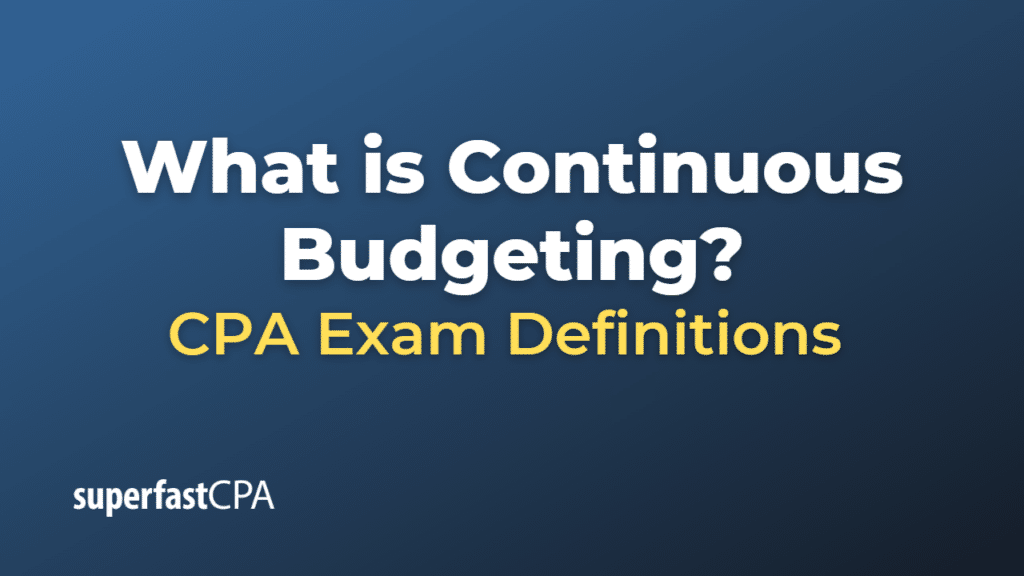Continuous Budgeting
Continuous budgeting, also known as rolling budgeting or perpetual budgeting, is a budgeting approach where a company continuously updates its budget by extending it for a specific period into the future, typically on a monthly or quarterly basis. This process involves adding a new budget period at the end of the budget horizon as the current period comes to an end, ensuring that the budget always covers a constant future time frame, such as the next 12 months.
Continuous budgeting helps organizations to be more flexible and adaptive to changes in the business environment, as it allows for regular review and revision of budget assumptions based on the latest financial performance, market conditions, and other relevant factors. This approach enables companies to be more proactive in managing their resources and to make better-informed decisions.
Advantages of continuous budgeting include:
- Improved accuracy: By regularly updating budget assumptions and forecasts, continuous budgeting helps maintain the budget’s relevance and accuracy, ensuring that it better reflects current market conditions and business performance.
- Enhanced flexibility: Continuous budgeting enables organizations to adapt more easily to changes in the business environment and to make timely adjustments to their plans and resource allocation as needed.
- Better decision-making: Regular budget reviews and revisions help organizations identify trends, variances, and potential issues early, allowing them to make proactive decisions and address any concerns promptly.
- Increased accountability: The ongoing nature of continuous budgeting encourages managers to be more responsible for their budgetary decisions and to monitor their department’s performance more closely.
- Streamlined planning process: By focusing on a rolling time frame, organizations can avoid the time-consuming and often disruptive annual budgeting process, resulting in a more efficient and effective planning process.
However, continuous budgeting can also be more time-consuming and resource-intensive, as it requires frequent budget reviews, updates, and adjustments. It may not be suitable for all organizations, especially those with relatively stable operations or limited resources to devote to the budgeting process.
Example of Continuous Budgeting
Let’s consider a fictional example of a retail company called “StyleMart” that uses continuous budgeting to maintain an up-to-date and relevant financial plan.
StyleMart has decided to implement a continuous budgeting approach, which covers a 12-month rolling time frame. At the beginning of each quarter, the company updates its budget by extending it for an additional quarter, ensuring that it always covers the next 12 months.
For instance, let’s assume that it’s currently the beginning of Q1. StyleMart’s initial budget covers Q1, Q2, Q3, and Q4. As Q1 comes to an end, StyleMart updates its budget by adding a new quarter (Q1 of the next year) while dropping the just-concluded Q1 of the current year. The updated budget now covers Q2 and Q3 of the current year and Q4 and Q1 of the next year.
During the quarterly budget update, StyleMart’s management team reviews the company’s financial performance and compares it to the initial budget. They also consider any changes in market conditions, customer preferences, and other relevant factors. Based on this analysis, they revise their sales forecasts, expense projections, and resource allocation for the upcoming quarters.
For example, they might observe a higher demand for a particular product line during Q1, leading them to increase their sales forecast and inventory levels for that product in the upcoming quarters. They might also identify cost-saving opportunities in their supply chain, prompting them to adjust their expense projections downward.
By implementing continuous budgeting, StyleMart can maintain an accurate and up-to-date financial plan that allows them to adapt to changes in the business environment, improve decision-making, and better allocate resources to support their strategic goals.













